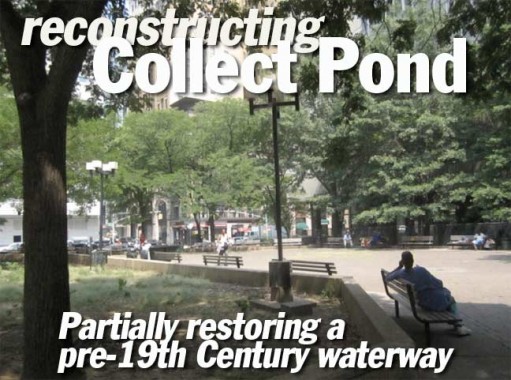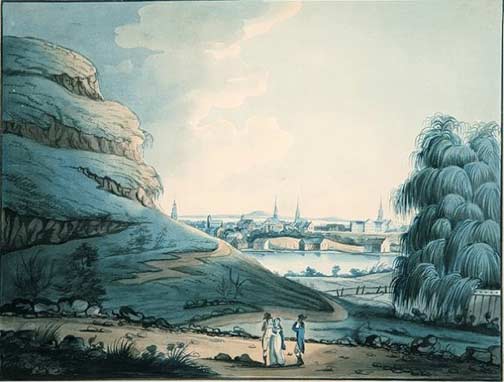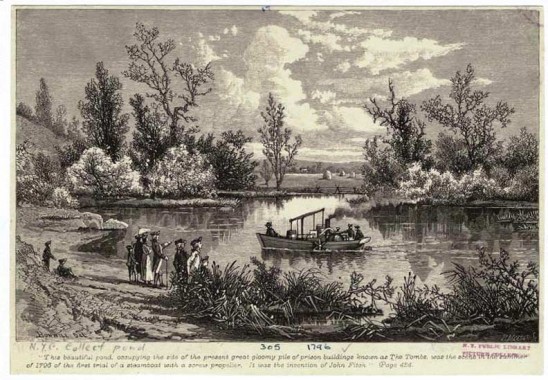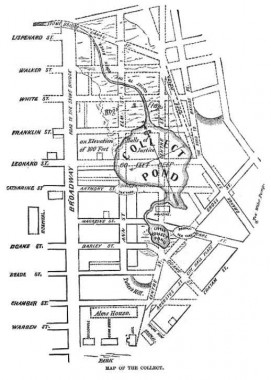BY SERGEY KADINSKY and KEVIN WALSH
Collect Pond Park, a public space between Lafayette and Centre Streets and north of Leonard, has been called one of the worst public spaces in downtown New York, with a smattering of benches and trees surrounding broken concrete. It lies atop one of New York’s foremost sources of fresh water prior to the American revolution, a spot known as Collect Pond (a British transliteration from the Dutch Kalck Hoek, or Chalk Hook). Reconstruction of the park aims to restore an enclosed pond.
This 1798 watercolor shows Collect Pond looking south toward New York City, which then barely reached the City Hall area. Manhattan was then quite hillier; some of the soil from leveled hills was later used to fill the pond space.
This woodcut shows 1796 steamboat experiments by inventor John Fitch. Fellow inventor Robert Fulton also attended these trials.
By 1800, NYC had begin to encroach upon the pond, which had already been surrounded by breweries, tanneries, and slaughterhouses which had began to turn the freshwater pond into an open sewer. The decision was made to drain it and fill it in by the 1810s. Canal Street, in part, is built atop a canal built to facilitate the Collect Pond drain.
Even after the pond was drained it remained marshy and mosquito-ridden, and the notorious Five Points slum (at today’s Columbus Park at Bayard and Worth Streets) sprang up after the pond disappeared. It would remain until the latter part of the 19th Century.
Aerial view of Collect Pond Park today (green area surrounding concrete plaza in lower center)
The restoration of the legendary pond began with former Parks Commissioner Henry Stern, who renamed Civil Court Park after the pond, putting its name back on the map. In 2008, the city announced a $4.6 million project to expand the park by a third onto an adjoining parking lot, with a bean-shaped pond taking up much of the redesigned park. A footbridge spanning the pond’s waist hearkens to the original pond’s shape, providing a historical link to a pond that has had such a huge role in the city’s history, before and after its burial.
The new Collect Pond Park is expected to open by mid-2012.
10/14/11



